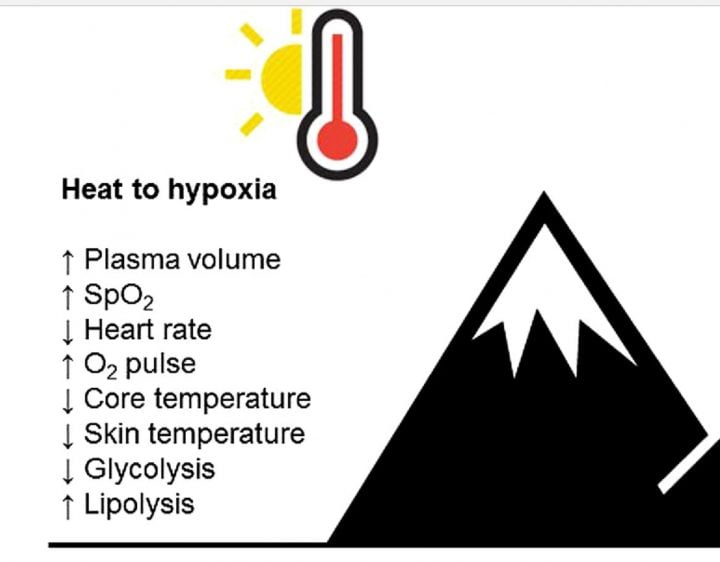Biohacking : When Heat Training can Compete with Elevation Training
Athletes and military personnel train in high temperatures and at elevation to max out their physical potential. Training at high altitude with lower oxygen levels forces our bodies to produce more red blood cells. A 2016 study on 21 male cyclists suggests that training in high temperatures could be nearly as effective as training in low oxygen (hypoxic) environments.
The University of Bath’s study titled “Cross Acclimation between Heat and Hypoxia” broke 21 cyclists into three groups of seven. The first group was a control (CON), the second was hypoxic training (HYP) and the third group was heat (HOT). Each group was exposed to one hour of exercise over ten days. The hypoxic group trained in simulated elevation and the heat group was pretty much locked in a sauna at 104F. Within 7 days the HOT group had adapted to the scorching temperature with a significant lower resting heart rate, core temperature, increased blood plasma volume and blood oxygen (SpO2) levels.
The time trials above (TT1 vs TT2) represent the initial cycling performance versus the final test at the end of the 10 day training window. In this case a lower time represents a better performance. The HOT group exposed to 104F temperatures during training were able to still reduce their time by nearly 5% when tested at altitude (which they had not been exposed to during training). The hypoxic (HYP) group reduced their time on average by nearly 7% after 10 days of training at simulated altitude.
Studies:
- https://ift.tt/2MiRo3F
- https://ift.tt/2oUtKRE
- https://ift.tt/2MiRNmH



